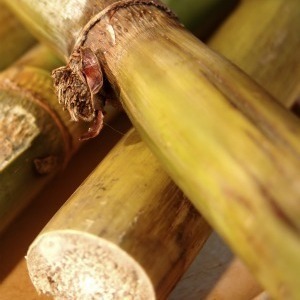UNICA: Increase in hydrous ethanol production continues

June 29, 2015
BY Erin Krueger
UNICA, the Brazilian sugarcane association, has announced mills in the country’s south-central region produced 1.66 billion liters (438.53 million gallons) of ethanol during the first half of June, including 638.33 million liters of anhydrous ethanol and 1.02 billion liters of hydrous ethanol. Production of hydrous ethanol was up 10.01 percent when compared to the 928.31 million liters produced during the same period of last year. During the first half of June 57.71 percent of processed cane went to ethanol production, up from 54.82 during the same period of last year.
From the start of the current season through mid-June, UNICA indicates 61.11 percent of processed cane went to ethanol production, up from 57.87 percent during the same period of last year. Ethanol production from the start of the season through mid-June has totaled 6.58 billion liters, including 4.5 billion liters of hydrous ethanol and 2.08 billion liters of anhydrous ethanol.
Advertisement
Advertisement
Producing units in the south-central region processed 39.38 million tons of sugarcane during the first half of June, down from 5.18 percent when compared to the same period of the prior year. From the start of the current season through mid-June, the curst has totaled 153.90 million tons, down 3.11 percent from last year. As of mid-June, UNICA said 264 producing units were operating in the region, down from 271 units last year.
Regarding cane quality, UNICA reported that the total recoverable sugars index from the start of the current season through mid-June was 118.40 kilograms per ton, down from 121.65 kilograms per ton during the same period of last year. Sugar production for the start of the current season through mid-June was 6.75 million tons, down more than 1 million tons when compared to the same period of last year.
Advertisement
Advertisement
Ethanol sales by units in the south-central region totaled 1.19 billion liters during the first half of June, up 29.63 percent compared to the same period of last year. Approximately 1.13 billion liters was sold into Brazil’s domestic market, with 66.04 million liters destined for export.
Domestically, 737.24 million liters of hydrous ethanol was sold, up more than 50 percent when compared to the same period of last year. Anhydrous ethanol sales were 390.42 million liters. From April 1 through mid-June, UNICA said ethanol sales in the region reached 5.63 billion liters, up 16.13 percent when compared to the same period of last year, while hydrous ethanol sales to the domestic market increased 43.09 percent, reaching 3.66 billion liters.
Related Stories
The U.S. Department of Energy’s Office of Energy Efficiency and Renewable Energy is soliciting public comments on a preliminary plan for determining provisional emissions rates (PER) for the purposes of the 45Z clean fuel production credit.
On July 17, Iowa’s cost-share Renewable Fuels Infrastructure Program awarded $1.12 million in grants for 20 applicants to add B11 and 4 applicants to add E15 to retail sites. This was the first meeting following the start of RFIP’s fiscal year.
Par Pacific Holdings Inc., Mitsubishi Corp. and ENEOS Corp. on July 21 announced the signing of definitive agreements to establish Hawaii Renewables LLC, a joint venture to produce renewable fuels at Par Pacific’s refinery in Kapolei Hawaii.
A new study published by the ABFA finds that the U.S. EPA’s proposal to cut the RIN by 50% for fuels made from foreign feedstocks, as part of its 2026 and 2027 RVOs, could stall the growth of the biomass-based diesel (BBD) industry.
The U.S Department of Energy Bioenergy Technologies Office, in partnership with the Algae Foundation and NREL, on July 21 announced the grand champion and top four winning teams of the 2023 - 2025 U.S. DOE AlgaePrize Competition.
Upcoming Events










